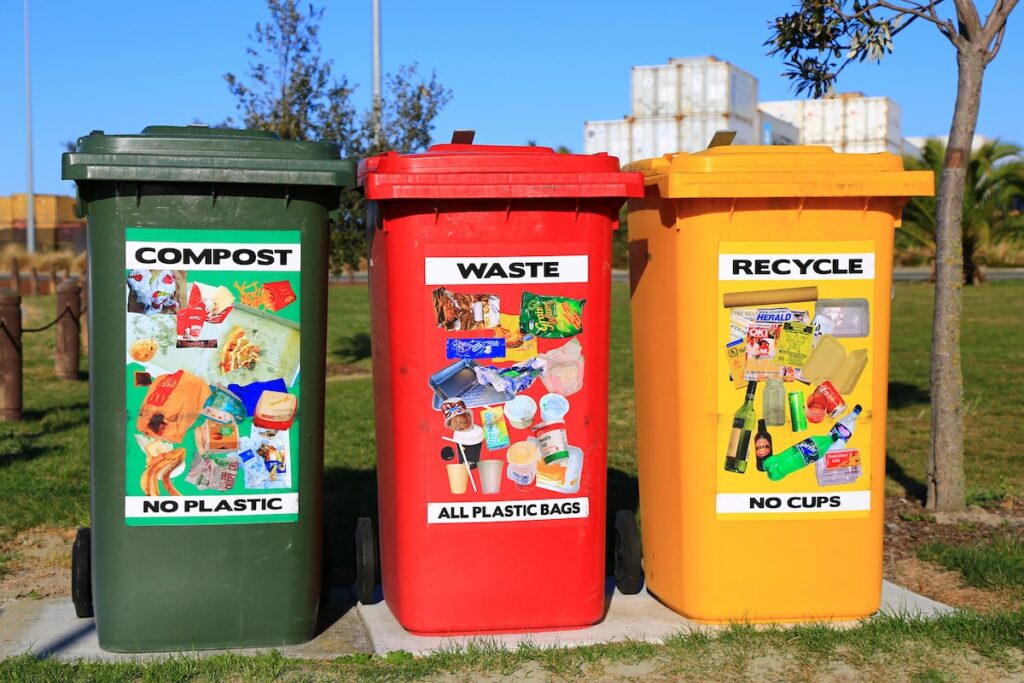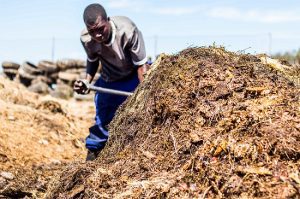What is industrial composting & why do we need it?
All GREEN HOME products are compostable. And most of them can be composted in home compost setups. But a few of our bioplastic products are recommended for industrial composting (also called commercial and large-scale composting). Not everyone knows what industrial composting is, so we’ve written this post to help clarify the term.

How industrial is it?
The word industrial may conjure up images of metallic machinery, iron, steel and steam. The term is also strongly associated with burning fossil fuels for energy. Igniting these long-buried materials was how humans powered the heavy machinery that built the industrial revolution, after all.
So quite naturally, many people assume that industrial composting involves big steampunk-style machines that burn lots of energy.
But the term industrial has other meanings. One of them is simply large-scale. The industrial revolution was all about the upscaling of manufacturing. And this increase in scale happened via the development of new factories and machines. Humans went from making things using handicraft to something exponentially bigger.
And today, when we say something is happening on an industrial scale, we mean a large scale.
This aspect of scale is what’s most relevant when talking about industrial composting. It is composting that happens on a larger scale than home composting.
Large-scale composting involves large piles. And turning these piles to aerate them is often done with machinery. But it can also be done by hand with a spade, as pointed out to us by composter Emile Fourie from YWaste. In other words, the machines are not essential. It is completely possible to carry out large-scale composting without any machines at all.

The tiny part of composting
Interestingly, the composting process itself happens on a very micro scale. The workers actually breaking down the organic matter are tiny microbes: bacteria and fungi. Most are too small to see with the naked eye. Yet a billion microbes can be present in a single teaspoon of soil.
As with many things in life, the more the merrier. And so it is with microbes in a compost pile. Microbes generate energy in the form of heat as they ‘digest’ the waste. So, bigger compost piles have more microbes and thus generate more heat. (Especially if they’re well-managed, are turned regularly to oxygenate them and have a good mix of materials.) The increased scale results in organic materials breaking down at a faster pace.
The increase in heat and microbial activity allows the faster breakdown of materials that break down very slowly in home compost piles. This includes things like thicker compostable bioplastics, avocado pips and peals and thicker woody materials. And the uptick in breakdown speed is all thanks to an increase in scale.

Why do we need industrial composting?
With more humans alive now than ever before, we’re creating enormous amounts of organic waste. At the moment we send most of this to landfill (arg!) where it doesn’t have the conditions it needs to break down.
The simple science-backed truth is that composting is one of the very best strategies for our organic waste. And the current scale of our waste requires large-scale composting. We need compost collection in every home and office, and composting in every village, town and city.
This will lead to a lot less waste, reduced carbon footprints and nutrients cycling back to soils to create healthier soils and plants (not to mention insects, animals and humans). Sound good? Join us in making it happen.

